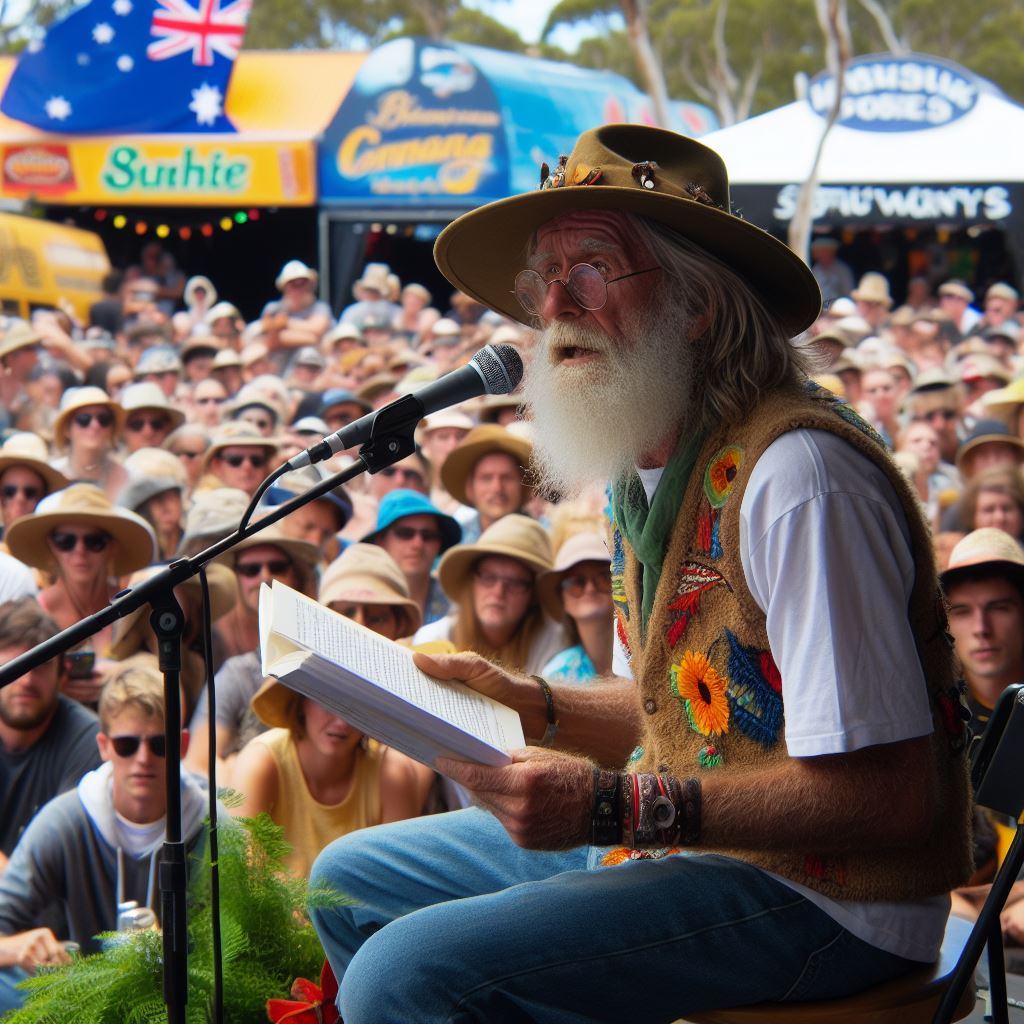Introduction
Australia cherishes renowned children’s authors, leaving indelible marks on literature. Mem Fox and Jackie French are prime examples. let’s discuss on children authors
Mem Fox, renowned for her captivating storytelling, authored cherished classics like “Possum Magic” and “Where Is the Green Sheep?”
Jackie French, equally esteemed, crafted notable works such as “Diary of a Wombat” and the “Kensy and Max” series.
Their books enchant readers young and old, becoming household favorites across generations in Australia.
What sets Australian children’s authors apart is their ability to tap into the unique experiences and landscapes of the country. From the diverse wildlife to the vast outback, these authors craft stories that not only entertain but also educate young readers about their surroundings.
In addition to their storytelling prowess, Australian children’s authors often address important themes such as resilience, friendship, and environmental conservation. These themes resonate with readers of all ages and contribute to the lasting impact of their works.
In review, Australia has a rich tradition of talented children’s authors who have carved a special niche in the literary world.
Their ability to create captivating stories that reflect the unique Australian landscape and address important themes sets them apart and makes their works cherished by readers worldwide.
Historical Overview of Australian Children’s Literature
The Early Beginnings of Australian Children’s Literature
- Australian children’s literature emerged in the late 19th century, with the colonization of Australia by Europeans.
- Literature for children initially focused on moralistic and didactic themes, aiming to educate and shape young minds.
- The first Australian children’s book, “A Mother’s Offering to Her Children,” was published in 1841 by Charlotte Barton.
- This book, along with others that followed, reflected the British influence on Australian literature during this period.
Influential Authors and Their Contributions
- Ethel Turner, an influential Australian author, wrote “Seven Little Australians” in 1894. It portrayed Australian family life.
- May Gibbs, known for her iconic “Snugglepot and Cuddlepie” series, contributed to the growth of Australian children’s literature.
- Norman Lindsay’s “The Magic Pudding” (1918) became a beloved Australian classic, blending humor and fantasy.
- These authors helped establish a unique Australian voice in children’s literature, differentiating it from its British and American counterparts.
Australian Culture and Landscapes’ Influence on the Genre
- Australian children’s literature began to reflect the Australian landscape, flora, and fauna, fostering a strong sense of national identity.
- Books like “Blinky Bill” by Dorothy Wall (1933) introduced young readers to Australian wildlife and bush settings.
- The use of Australian slang and colloquial language in children’s books further enhanced the connection to Australian culture.
Evolution of Children’s Literature in Australia
- In the mid-20th century, Australian children’s literature underwent significant changes.
- Authors like Ivan Southall and Patricia Wrightson explored more diverse themes and characters, representing Australia’s multicultural society.
- Indigenous authors, such as Sally Morgan and Boori Monty Pryor, emerged, infusing Aboriginal perspectives into children’s literature.
- The genre also expanded to include picture books, illustrated by talented Australian artists like Shaun Tan and Mem Fox.
To conclude, Australian children’s literature has a rich and distinct history shaped by its early beginnings, influential authors, cultural influences, and evolving themes.
It continues to captivate young readers with stories that celebrate Australian identity and embrace the country’s diverse cultures and landscapes.
Characteristics of Australian Children’s Authors
Diverse and relatable characters
Australian children’s authors are celebrated for their meticulous attention to crafting diverse and relatable characters within their narratives.
Through the portrayal of characters from various backgrounds, ethnicities, and cultures, these authors aim to create stories that resonate with a wide spectrum of readers, fostering a sense of inclusivity and representation.
By showcasing the richness of human diversity, these authors not only reflect the multicultural fabric of Australian society but also provide young readers with role models they can identify with and aspire to emulate.
Incorporation of the Australian landscape and wildlife
Many Australian children’s authors vividly depict the diverse landscape and wildlife, immersing readers in their homeland’s beauty.
They skillfully weave descriptions of Australia’s terrain, from sun-kissed beaches to rugged Outback expanses.
Iconic fauna like kangaroos, koalas, and colorful parrots populate their narratives, adding to the vivid portrayal.
Through these stories, readers gain a deeper appreciation for the wonders of the Australian environment.
Strong sense of humor and wit
A hallmark feature of Australian children’s literature is its inherent wit and humor, which infuses the storytelling with charm and levity.
Whether through clever wordplay, witty dialogue, or humorous situations, these authors captivate readers with their playful approach to storytelling, ensuring that their narratives are as entertaining as they are enlightening.
By incorporating humor into their work, these authors engage young readers on a deeper level, inviting them to participate in the joy of discovery and the pleasure of laughter.
Themes relevant to Australian children
Australian children’s authors are adept at exploring themes that are relevant and meaningful to young readers growing up in Australia.
From stories about friendship, family, and identity to narratives that address pressing social issues such as environmental conservation, Indigenous culture, and social justice, these authors tackle a diverse range of subjects with sensitivity and insight.
By delving into these themes, they not only provide readers with a deeper understanding of the world around them but also encourage them to think critically and empathetically about the issues that affect their lives and communities.
Your Personalized Career Strategy
Unlock your potential with tailored career consulting. Get clear, actionable steps designed for your success. Start now!
Get StartedUse of colloquial language and unique vocabulary Characteristics of Australian Children’s Authors
The use of colloquial language and unique vocabulary is another distinctive feature of Australian children’s literature.
Through the incorporation of slang, idioms, and regional dialects into their narratives, these authors capture the rhythm and cadence of Australian English, immersing readers in the rich linguistic tapestry of their culture.
By embracing the richness and diversity of language, these authors create stories that feel authentic and true to life, enhancing the reading experience and fostering a deeper connection between readers and the worlds they inhabit.
Read: Australian Music Awards: A Closer Look
Notable Australian Children’s Authors
Mem Fox: Impact on Australian children’s literature
Mem Fox is one of Australia’s most renowned and beloved children’s authors. Her impact on Australian children’s literature is undeniable. With her exceptional storytelling abilities and memorable characters, Fox has captured the hearts of children and adults alike.
Fox’s books are known for their warmth, humor, and emotional depth. Through her stories, she tackles important themes such as diversity, acceptance, and empathy. Her writing style is engaging and accessible, making her books suitable for children of all ages.
One of Fox’s most popular works is “Possum Magic,” which has become a classic in Australian children’s literature. This delightful tale follows the journey of Grandma Poss and Hush, a young possum, as they search for a way to make Hush visible again after she becomes invisible.
Fox’s magical storytelling and lyrical language make this book a joy to read.
In addition to her writing, Fox is also a strong advocate for literacy and early childhood education. She has conducted numerous workshops and presentations, helping teachers and parents understand the importance of reading aloud to children from a young age.
Her passion for literacy has had a significant impact on the Australian education system.
Shaun Tan: Unique illustration style and storytelling
Shaun Tan is an Australian author and illustrator known for his unique and visually stunning illustrations. His distinct style combines elements of surrealism, fantasy, and science fiction, creating a world that is both captivating and thought-provoking.
Tan’s illustrations often evoke a sense of wonder and invite readers to explore the intricate details of his artwork. His ability to convey emotions and tell stories through his illustrations is truly remarkable.
His books, such as “The Arrival” and “The Lost Thing,” have received critical acclaim and have been recognized with numerous awards.
“The Arrival” is a wordless graphic novel that tells the story of a man who leaves his homeland in search of a better life for his family. Through Tan’s illustrations, readers are able to empathize with the protagonist’s journey and experience a range of emotions.
Jackie French: Popular books and contributions to the industry
Jackie French is an Australian author who has made significant contributions to the children’s literature industry. Her books cater to a wide range of ages, from picture books to young adult novels.
French’s books often explore historical events and themes, providing a valuable educational experience for young readers. One of her most popular works is “Diary of a Wombat,” which follows the daily life of a mischievous wombat.
This book, filled with humor and charm, has become a favorite among children worldwide.
In addition to her writing, French is also an advocate for environmental sustainability and wildlife conservation. Her books often incorporate messages of conservation and respect for nature, inspiring young readers to take action and protect the environment.
Other noteworthy authors
Several other Australian children’s authors have made significant contributions to the industry. Some notable mentions include Andy Griffiths, Morris Gleitzman, and Emily Rodda.
Andy Griffiths is known for his humorous and imaginative books, such as the “Treehouse” series, which has captivated young readers with its zany adventures and hilarious illustrations.
Stand Out with a Resume That Gets Results
Your career is worth more than a generic template. Let us craft a resume and cover letter that showcase your unique strengths and help you secure that dream job.
Get HiredMorris Gleitzman’s books tackle sensitive topics with empathy and compassion. His most well-known work, “Once,” follows the story of a young Jewish boy during the Holocaust, highlighting the power of hope and resilience.
Emily Rodda has created beloved fantasy series, including “Deltora Quest” and “Rowan of Rin,” which have captured the imaginations of young readers with their thrilling quests and rich world-building.
These authors, along with Mem Fox, Shaun Tan, and Jackie French, have shaped the landscape of Australian children’s literature. Through their unique storytelling and passion for writing, they have touched the lives of countless children, instilling a love for reading that will last a lifetime.
Read: Music Production: A Guide for Aussies
Discover More: From Stage to Screen: Aussie Actors’ Journey
Challenges and Opportunities for Australian Children’s Authors
Limited market size compared to other countries
- Australian children’s authors face the challenge of a smaller market compared to other countries.
- The limited market size reduces the potential reach and financial opportunities for local authors.
- However, this challenge also presents an opportunity for Australian authors to focus on catering to the unique needs and interests of local readers.
- By understanding the specific preferences of Australian children, authors can carve out a special niche for themselves.
Competition with international authors for recognition and publication
- Australian children’s authors not only have to compete within their local market but also with international authors.
- The global nature of the publishing industry makes it essential for authors to stand out and distinguish themselves from the competition.
- This challenge pushes Australian authors to constantly improve their craft, develop unique storytelling techniques, and create compelling characters.
- While the competition can be tough, it also presents an opportunity for authors to gain recognition on a broader scale and expand their readership internationally.
Opportunities for collaboration through literary festivals and conferences
- Australian children’s authors have the advantage of opportunities for collaboration through literary festivals and conferences.
- These events provide a platform for authors to come together, share ideas, network, and learn from each other.
- Collaborations with fellow authors can lead to new perspectives, enhanced creativity, and potential cross-promotion opportunities.
- Literary festivals and conferences also provide a chance for authors to connect with readers and gain valuable feedback on their work.
Use of technology and digital platforms to reach wider audiences
- Australian children’s authors can leverage technology and digital platforms to overcome geographical limitations and reach wider audiences.
- Digital publishing allows authors to distribute their works globally, breaking down barriers to entry in foreign markets.
- E-books, audiobooks, and interactive storytelling apps provide innovative ways to engage young readers and create immersive experiences.
- The use of social media and online marketing enables authors to connect directly with their audience, build a fan base, and promote their work.
In a nutshell, while Australian children’s authors face challenges such as a limited market size and competition with international authors, there are also numerous opportunities available.
By focusing on the unique needs of Australian readers, collaborating with fellow authors, and utilizing technology and digital platforms, Australian authors can thrive in their special niche and reach wider audiences both locally and internationally.
Read: How to Network in Australia’s Music Scene

Learn More: Photography Laws in Australia: What to Know
Future Trends and Outlook for Australian Children’s Authors
Australian children’s authors are embracing future trends: meeting demand for diverse representation, amplifying indigenous voices, collaborating with entertainment mediums, and expanding into international markets.
Growing Demand for Diverse Representation in Children’s Literature
The rising demand for diversity in children’s literature prompts authors to craft stories showcasing varied cultures, backgrounds, and identities.
Australian children’s authors actively respond, creating narratives that feature diverse characters and explore myriad experiences.
This initiative allows marginalized children to see themselves in literature, fostering inclusivity.
Simultaneously, it provides all children with opportunities to learn about and appreciate different cultures and perspectives.
In meeting the demand for diverse representation, Australian children’s authors actively contribute to building empathy, understanding, and acceptance in young readers.
These authors play a pivotal role in shaping the literary landscape by offering books that authentically reflect the rich diversity present in Australian society.
Through this approach, children’s literature becomes a powerful medium for cultivating awareness and appreciation of differences.
As authors actively respond to the evolving needs of their audience, they contribute to a more inclusive and enriched literary environment, fostering a generation of readers who value and embrace diversity in all its forms.
Promoting Indigenous Voices and Perspectives
The importance of promoting indigenous voices and perspectives in children’s literature cannot be overstated. Australian children’s authors have a unique opportunity to amplify indigenous voices and shed light on the rich cultural heritage of the First Nations people.
By writing stories that accurately represent indigenous experiences, authors can help bridge the gap between indigenous and non-indigenous communities, fostering mutual respect and understanding.
These stories can also serve as a powerful educational tool, teaching children about the history, traditions, and contributions of Australia’s indigenous peoples. Through books, young readers can develop a deeper appreciation for indigenous cultures and traditions.
Collaborations with Other Entertainment Mediums
The potential for collaborations between children’s authors and other entertainment mediums, such as film and television, is vast. Adapting books into movies or TV shows can introduce stories to a wider audience and spark a renewed interest in reading.
Transform Your LinkedIn for Maximum Impact
Elevate your professional brand with a LinkedIn profile that attracts recruiters, showcases your expertise, and maximizes opportunities. Stand out in your industry with a profile built for success.
Boost ProfileCollaborations with filmmakers and producers can bring beloved characters and stories to life, creating a multi-dimensional experience for young readers. This cross-medium exposure can also lead to increased book sales and recognition for the authors.
Additionally, collaborations with other entertainment mediums can offer new storytelling opportunities and expand the reach and impact of children’s literature.
For example, interactive digital platforms and augmented reality can enhance the reading experience and make books more accessible to tech-savvy young readers.
Expansion into International Markets and Translation of Works
Australian children’s authors have a tremendous opportunity for expansion into international markets. With the globalization of literature, there is a growing interest in diverse stories from around the world.
Authors can leverage the appeal of Australian culture, landscapes, and unique perspectives to captivate international readers. The translation of works into different languages can help overcome language barriers and bring Australian children’s literature to a global audience.
International success not only benefits the authors but also promotes a positive image of Australian literature and enhances the country’s reputation in the global literary scene.
Australian children’s authors have promising futures, driven by demand for diverse representation, indigenous voices, collaborations, and international expansion.
By embracing these trends and opportunities, Australian children’s authors can continue to captivate young readers and contribute to a more inclusive and interconnected literary landscape.
Read: The Evolution of Australian Music Genres
See Related Content: Top Journalism Schools in Australia
Learn More: Navigating Music Contracts in Australia
Conclusion
Australian children’s authors hold a profound significance within the vast landscape of literature, weaving narratives that resonate deeply with readers of all ages.
Their stories, filled with wonder, adventure, and wisdom, have transcended borders and time, leaving an enduring legacy that continues to enchant and inspire.
As we reflect on the remarkable contributions of Australian children’s authors, we are reminded of the limitless potential for future growth and success in this vibrant literary realm.
With each passing year, new voices emerge, bringing fresh perspectives, innovative storytelling techniques, and diverse characters to the forefront.
This evolution not only enriches the tapestry of Australian children’s literature but also expands its reach and impact on a global scale.
In closing, I urge readers to immerse themselves in the enchanting worlds crafted by Australian children’s authors.
By delving into their works, we embark on a journey of imagination and discovery, where every page invites us to explore new horizons and embrace the magic of storytelling.
Let us celebrate the richness of our literary heritage and support the local talent that continues to captivate hearts and minds around the world.
Together, let’s champion Australian children’s authors and ensure that their voices resonate for generations to come.




